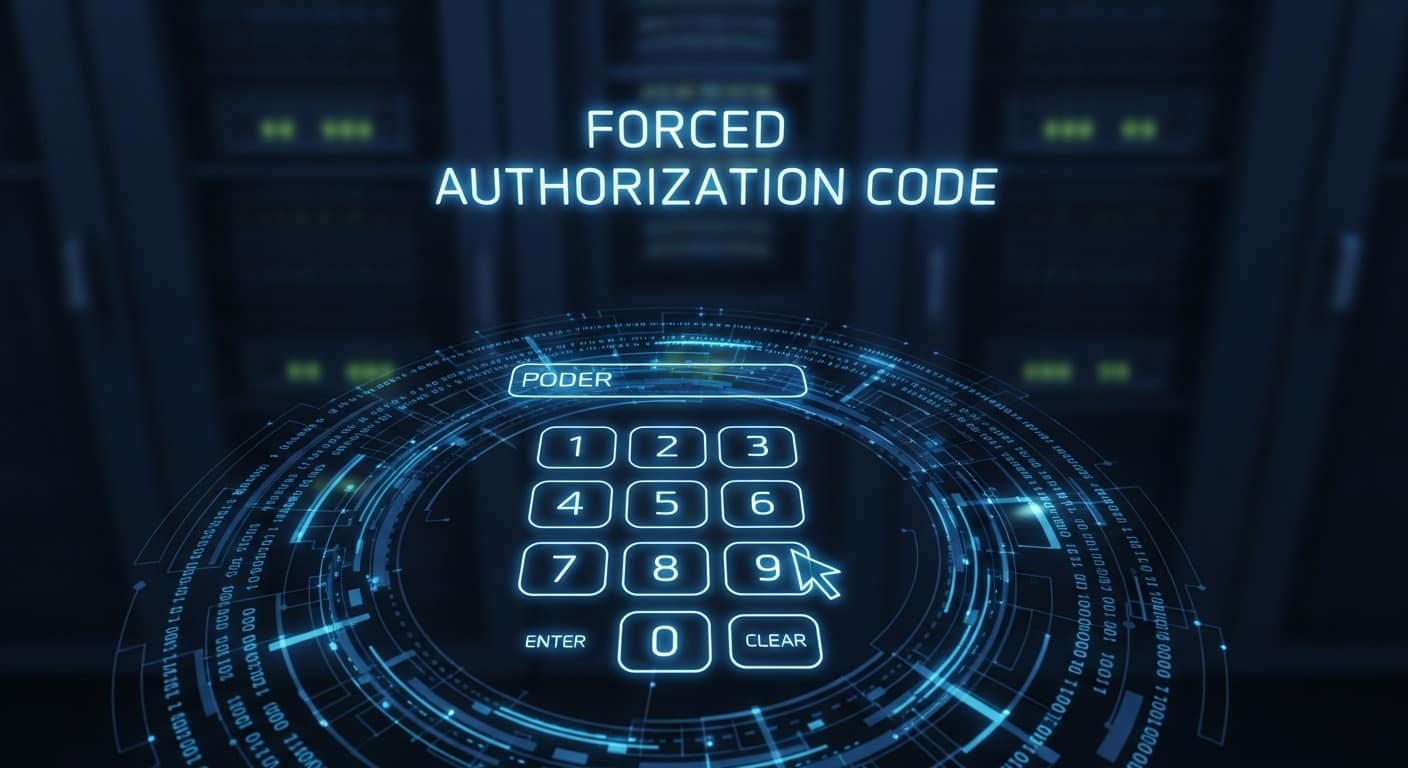Introduction
In today’s digital and financial world, authorization plays a vital role in ensuring security and control. One important concept used across telecommunications, banking, and IT systems is the forced authorization code. It acts as a safeguard and control mechanism to verify that only authorized users can access certain functions or perform sensitive operations.
This article explores the meaning, applications, and benefits of a forced authorization code, explaining why it is essential in various industries and how it helps maintain security and accountability.
What Is a Forced Authorization Code?

A forced authorization code (FAC) is a security feature used in many systems—particularly in telecommunications and call management—to restrict access to certain functions until a valid authorization code is entered.
In simple terms, when a system or device requires an action that has security implications, such as making an international call or performing a financial transaction, it prompts the user for a forced authorization code. This ensures that only users with permission can proceed.
The term “forced” means that the system does not allow the operation to continue unless the code is correctly entered.
Purpose of a Forced Authorization Code
The main purpose of a forced authorization code is to add an extra layer of control and accountability. It ensures that only authorized individuals can perform specific actions that may involve costs, security risks, or sensitive data.
Some common purposes include:
- Preventing unauthorized access: By requiring a code, systems prevent misuse or accidental access.
- Tracking usage: The code helps identify which user performed an action, ensuring accountability.
- Enhancing security: It minimizes risks of fraud or unauthorized system use.
- Controlling costs: Especially in telecommunications, forced authorization codes prevent excessive or unapproved usage.
How a Forced Authorization Code Works
The process of using a forced authorization code usually involves these steps:
- User Request: The user attempts to perform an action that requires higher permission (like placing an international call).
- System Prompt: The system prompts for an authorization code.
- Code Entry: The user enters their assigned forced authorization code.
- Verification: The system verifies the code against stored credentials.
- Access Granted or Denied: If the code matches, the user proceeds. If not, access is denied.
This straightforward process provides strong access control while maintaining efficiency in daily operations.
Forced Authorization Code in Telecommunications
In telecommunications, the forced authorization code is widely used to manage calling privileges. Businesses and organizations use this system to restrict certain types of calls, such as long-distance or international calls, to authorized staff only.
Example of Use
A company might assign different forced authorization codes to employees based on their roles. A manager may have a code that allows both local and international calls, while a regular employee’s code may allow only local calls.
This helps companies:
- Monitor who makes which calls.
- Prevent unauthorized or personal long-distance calls.
- Track expenses related to telecommunications.
Forced Authorization Code in Banking and Finance
In the banking industry, forced authorization codes play a critical role in approving high-value or sensitive transactions.
When a transaction exceeds a certain threshold or involves specific accounts, the system may require a forced authorization code before processing it. This ensures that only authorized personnel—such as a branch manager or senior officer—can approve these operations.
It provides multiple benefits, including:
- Preventing fraudulent transfers.
- Enhancing compliance with financial regulations.
- Providing audit trails for every transaction.
Forced Authorization Code in IT and Access Control
In IT systems, forced authorization codes are used for access control and administrative functions. When certain operations, like changing configurations, installing software, or accessing restricted data, are attempted, the system may require a valid authorization code.
This practice helps:
- Protect critical systems from unauthorized changes.
- Maintain detailed logs of who performed which actions.
- Strengthen cybersecurity policies in organizations.
Benefits of Using a Forced Authorization Code
Implementing a forced authorization code system provides several key benefits:
1. Enhanced Security
Requiring users to enter a code before proceeding ensures that only trusted individuals can access restricted functions.
2. Accountability
Every code is linked to a specific user, making it easy to track actions and identify responsible individuals.
3. Cost Management
Especially in telecommunications or cloud systems, forced authorization codes help organizations monitor and manage usage-based costs.
4. Fraud Prevention
By controlling access, companies can significantly reduce the risk of unauthorized or fraudulent activities.
5. Compliance Support
Many industries have regulatory requirements for tracking access and approvals. Forced authorization codes support compliance by maintaining detailed logs.
Common Industries Using Forced Authorization Codes
The forced authorization code system is versatile and can be applied in multiple sectors. Some common examples include:
- Telecommunications: Managing call restrictions and tracking usage.
- Finance and Banking: Authorizing high-value or sensitive transactions.
- Healthcare: Protecting confidential patient information.
- IT and Cybersecurity: Controlling administrative privileges.
- Education and Government: Restricting access to classified or sensitive data.
Each industry tailors the use of forced authorization codes according to its operational needs and security policies.
Examples of Forced Authorization Code Scenarios
To understand the practical importance of forced authorization codes, consider the following scenarios:
- A telecom company employee wants to call a foreign number for business purposes. The system prompts for their forced authorization code before completing the call.
- A bank teller tries to process a large cash withdrawal. The system requests a manager’s authorization code before approving the transaction.
- An IT administrator attempts to modify server configurations. The control panel requires an authorization code to prevent unauthorized changes.
These examples highlight the wide range of applications for forced authorization codes in maintaining secure and efficient operations.
How to Manage Forced Authorization Codes Effectively
Effective management of forced authorization codes is essential to maintain security without hindering productivity. Here are some best practices:
1. Assign Unique Codes
Each user should have a unique forced authorization code to ensure accountability.
2. Regularly Update Codes
Codes should be changed periodically to prevent misuse or leaks.
3. Limit Access
Only trusted employees should receive codes that grant higher privileges.
4. Use Multi-Factor Verification
Combine forced authorization codes with other authentication methods like PINs or biometric verification for stronger security.
5. Monitor Usage Logs
Regularly review system logs to identify unusual activities or unauthorized attempts.
Challenges in Implementing Forced Authorization Codes
While beneficial, using forced authorization codes also comes with challenges:
- User Inconvenience: Requiring codes can slow down processes if not managed efficiently.
- Code Sharing: Some users may share codes, which can reduce accountability.
- Maintenance Overhead: Systems need regular updates and monitoring to ensure codes remain secure.
Organizations can overcome these challenges through proper training, automation, and regular audits.
The Future of Forced Authorization Codes
As technology advances, the concept of the forced authorization code is evolving. Modern systems are integrating it with advanced security tools such as biometric authentication, encryption, and AI-based access control.
In the future, forced authorization codes will likely become part of multi-layered security frameworks, offering a balance between accessibility and protection.
Conclusion
The forced authorization code is a powerful tool for maintaining control, security, and accountability across different systems and industries. Whether used in telecommunications, finance, or IT, it provides a structured way to ensure that only authorized actions are taken by the right individuals.
In an age where data breaches and unauthorized access are major concerns, implementing a forced authorization code system is no longer optional—it’s a necessity.

